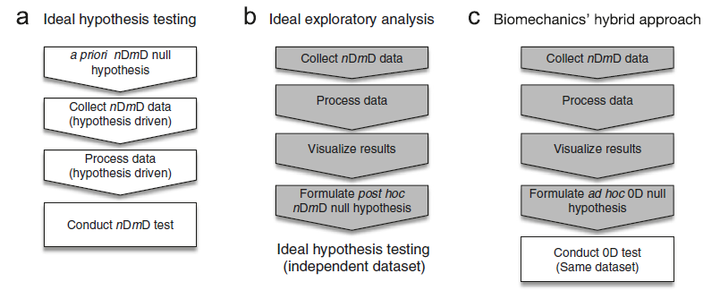The probability of false positives in zero-dimensional analyses of one-dimensional kinematic, force and EMG trajectories

Abstract
A false positive is the mistake of inferring an effect when none exists, and although α controls the false positive (Type I error) rate in classical hypothesis testing, a given α value is accurate only if the underlying model of randomness appropriately reflects experimentally observed variance. Hypotheses pertaining to one-dimensional (1D) (e.g. time-varying) biomechanical trajectories are most often tested using a traditional zero-dimensional (0D) Gaussian model of randomness, but variance in these datasets is clearly 1D. The purpose of this study was to determine the likelihood that analyzing smooth 1D data with a 0D model of variance will produce false positives. We first used random field theory (RFT) to predict the probability of false positives in 0D analyses. We then validated RFT predictions via numerical simulations of smooth Gaussian 1D trajectories. Results showed that, across a range of public kinematic, force/moment and EMG datasets, the median false positive rate was 0.382 and not the assumed α=0.05, even for a simple two-sample t test involving N ¼10 trajectories per group. The median false positive rate for experiments involving three-component vector trajectories was p¼ 0.764. This rate increased to p¼ 0.945 for two three-component vector trajectories, and to p¼0.999 for six three-component vectors. This implies that experiments involving vector trajectories have a high probability of yielding 0D statistical significance when there is, in fact, no 1D effect. Either (a) explicit a priori identification of 0D variables or (b) adoption of 1D methods can more tightly control α.